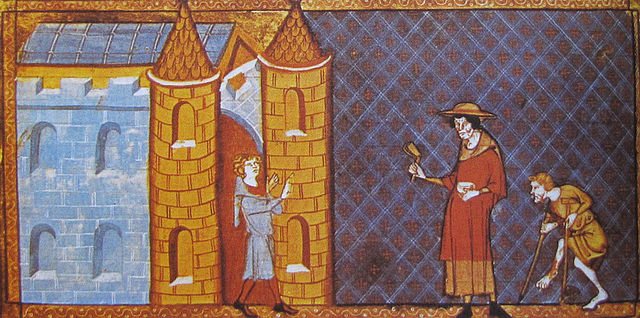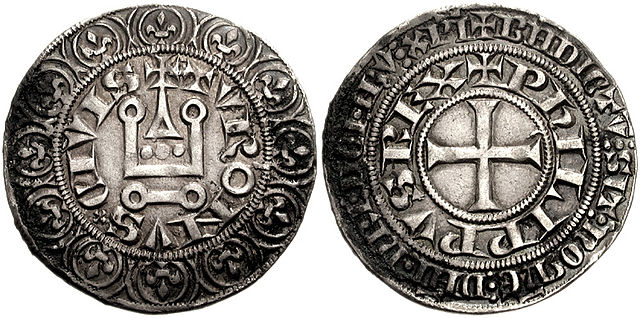The 1321 lepers' plot was an alleged conspiracy of French lepers to spread their disease by contaminating water supplies, including well water, with their powders and poisons. According to the American historian Solomon Grayzel, lepers were the most abused group of people during the Middle Ages: they were thrown out of settlements and treated as wild animals due to the widespread belief that their disease was highly contagious. However, other historians have contested such a view, pointing out that lepers often lived within communities in leper houses (leprosaria) and were supported by charitable donations.
Two lepers denied entrance to town
Philip V, known as the Tall, was King of France and Navarre from 1316 to 1322. Philip engaged in a series of domestic reforms intended to improve the management of the kingdom. These reforms included the creation of an independent Court of Finances, the standardization of weights and measures, and the establishment of a single currency.
Contemporary miniature depicting the coronation of Philip V, from the Grandes Chroniques de France
Philip engineered a hasty coronation after the death of his nephew, the young John I, to build support for his bid for the French throne in 1316–17.
Philip took steps to reform the French currency during the course of his reign, including these silver Tournois coins.
Philip pursued a successful diplomatic and dynastic solution to the long running tensions with Flanders.





